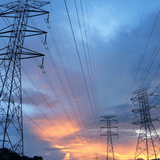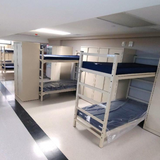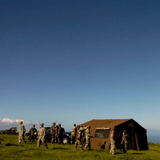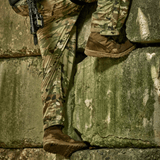Emergency Preparedness Water
Emergency Preparedness Water
For emergency preparedness having a water plan is vital and something to think about before hand. Even if you are not preparing for the long term having water, food and shelter for 2 weeks is essential for every family in an emergency. Bug in or Bug out what will you do? We have said many times that during a storm most supper markets only have a 2 week supply for their area and trucking in water may not be an option in all situations. Never rely on anything that you cannot control for your own preparedness.
The rule of thumb is 1 gallon per person per day. You can live on much less but for comfort this will be what you want to provide for your family. A family of 4 during an emergency for 14 days would then use 56 gallons of water. Even if you cut that in half and you still need 28 of drinking water on hand at all times. If there is no running water most people do not have that amount handy and when there is but it is not clean in addition to odor and taste, contaminated water can contain microorganisms (germs) that cause diseases such as dysentery, cholera, typhoid and hepatitis.
There are several things you can do that are simple for a Bug-In or Bug-Out emergency survival situation. If you know a storm is coming and we really like the bathtub water storage bladder. It is inexpensive and is a simple FDA approved bladder that will safely store 65 gallons of water in your bathtub for drinking. There is a spout and pump for easy use making it drinkable for the duration. I remember that filing the bathtub was the first thing we did before a storm but it was uncovered, and we only used it for flushing toilets or sponge type bath clean ups.
If you have used all of your stored water and there are no other reliable clean water sources, it may become necessary in an emergency situation to treat suspicious water. Treat all water of uncertain quality before using it for drinking, food washing or preparation, washing dishes, brushing teeth or making ice. In addition to having a bad odor and taste, contaminated water can contain microorganisms (germs) that cause diseases such as dysentery, cholera, typhoid and hepatitis.
Once you have used your clean water or if you did not have time to store any there are several good ways to treat water. None of them are perfect and each has pros and cons.
For all methods if the water is dirty then let it settle to the bottom or strain them using a coffee filter or layers of clean clothe. A white all cotton tee shirts also work well.
Boiling
Boiling is the safest and easiest way to treat water. Simply bring water to a rolling boil for two full minutes, keeping in mind that some water will evaporate. When you boil water to drink it taste better if you pour it back and forth in order to put oxygen back into it. This also works with old water that may have been stored.
Chemicals
There are a couple ways you can treat water to be safe. Household liquid bleach will kill microorganisms but only use regular household liquid bleach that contains 5.25 to 6.0 percent sodium hypochlorite. Do not use scented bleaches, color safe bleaches or bleaches with added cleaners. Because the potency of bleach diminishes with time, use bleach from a newly opened or unopened bottle. You only want to use about a ½ a cap full or (1/8 teaspoon) per gallon of water then mix and let stand for 30 minutes. If the water doesn’t have s slight bleach scent then repeat and let it stand another 15 minutes. If after the 2nd time there is not smell of chlorine do not drink it and use it for toilet flushing.
Water purification tablets or Iodine is a simple and easy way. Purify 1 gallon at a time and it will be easy to measure and store. The directions vary slightly so read each type you purchase. Most have a waiting time of 15-30 minuets before the tablets, power or drops dissolve and kill the microorganisms. There will be a slight smell and possibly taste depending on what you use but safe to drink.
Distillation
Water, Water everywhere none to drink. The method of distillation will remove microbes in water, as well as heavy metals, salts and most other chemicals. Distillation means boiling the water and then collection of only the vapor that condenses. This method creates fresh water from salt, dirty or contaminated water. The vapors will be free from all impurities.
To distill there are several good methods. 1 is to fill a pot halfway with water and place another pot or bowl inside that is not touching the sides or bottom. Use a backing type rack if you need to but floating a glass bowl works also. Then turn the lid upside down and place ice or something cold on the top to speed up the process. The water vapors will hit the upside down lid and drip back into the clean water pot or bowl. Wikihow has some good images for this below.


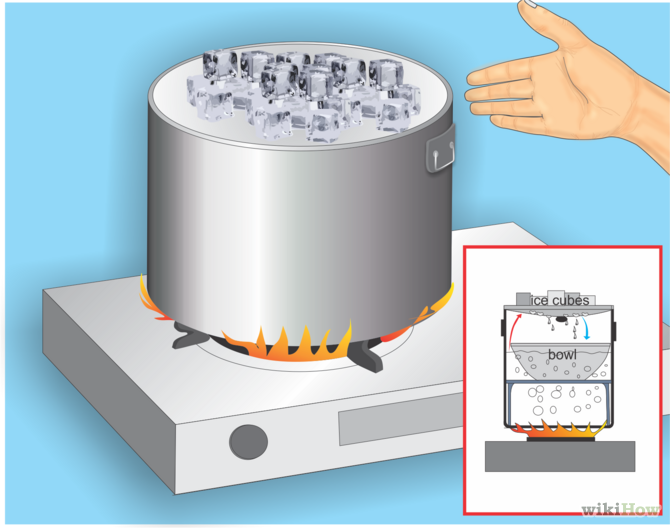

Filters
There are many filter systems on the market. Most are good and they are all for best for specific needs. As long as they work and filter to a .02 micron level it will make water safe to drink. If you buy a water filter know whether you are buying a filter or purifier. We will do a future blog on filters along but there is a big difference. Filters in short will take dirty water making it drinkable and also remove microbes but not viruses. Purifiers will kill viruses and remove microbes using a chemical or charcoal. A purifier however may not be what you need for your use and it is much more expensive then a filter along. We really like the Sawyer products for both. They are simple to use and, last for 1mil gallons and compact.
Whichever method you use storing water for emergency preparedness is the first place to start. It is also necessary for you to test and try a couple different methods before you need it. Learning on the job is stressful and you will not be able to find answers to your questions when you have one. Also be sure that more then 1 person in your family has the skills.

